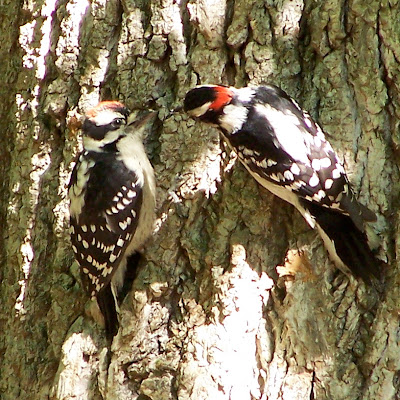 |
| Japanese maple "Shadow's Select" |
In my mind, I could see the heat coming. We were about to leave for a vacation in Florida. This tree must be found and planted. Now. So I visited a local nursery that specializes in Japanese maples and picked out a specimen. In talking with the nursery employee about growing conditions for Japanese maples, I admitted that the site I had in mind wasn’t ideal– hard clay under the canopy of a huge pine tree. If lucky, I would be able to dig four to six inches into the clay without hitting tree roots.
No problem. I would build a “volcano” of rich, loose soil on top of the clay hardpan. Never mind my typical scorn of the proliferation of city trees planted on such volcanoes as installations, not gardening. The craving for the Japanese maple was overwhelming.
The nursery employee recommended the compost at the city landfill. He said it was made by a reputable contractor whom I had heard composted food scraps from restaurants and cafeterias. It was raining hard when I arrived at the landfill, so I didn’t bother to get out of the truck and inspect the compost.
The next day, filled with anticipation of a ceremonial tree-planting, I began shoveling the compost out of the truck. I picked up a handful of compost and inhaled. It smelled like an ashtray. Sharp, bitter, and not at all earthy. I inspected the compost more closely. It was black and loose, but drier and lighter than usual. Then I saw shreds of the kind of orange mulch popular with gas stations. As my plan was to put most of the compost on the vegetable garden after planting the Japanese maple, I was disturbed. Just what had I bought?
 |
| What to do with a truck full of bad compost? |
I love soil. I love touching the earth with my hands. I often garden without gloves, just because I like the feel of the soil. I like to see worms squirming in the soil when I pick up a clump. This compost was lifeless. Every day I smelled it, hoping that the cigarette butt odor would have dissipated and been replaced, magically, with the smell of sweet earth. Meanwhile, I drove around town for a week with a pickup truck full of compost, mentally kicking myself to giving in to the desire for instant gratification.
It’s not a bad thing to want a Japanese maple. But why was I in such a rush? I’ve been trying hard to live a simpler life and get away from the consumer mentality that is so destructive to the earth. I try to slow down, to evaluate whether I really need something before I purchase it. I seek to live by nature’s rhythms and not be ruled by desire. If I had waited to plant the tree in the fall, our composted kitchen scraps would have been ready to amend the soil. As punishment, I ended up stuck with a truck full of suspect compost.
P.S. The tree is doing beautifully.














































